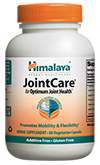
The Relationship between Obesity & Joint Problems
Recently, obesity has become a global epidemic, as more people are being classified as obese. It’s a known fact that going over the ideal body weight (depending on the person’s Body Mass Index or BMI) or being obese causes several health issues, which can become serious. The most common complications from obesity are the problems to the joints. Most people suffering from obesity experience joint pain. Excessive weight increases the risk of developing joint problems. The most likely affected parts of the body exist wherever the weight is distributed like the ankles, hips, and knees. This is just one of the reasons why it is important to keep an ideal weight.
 Excessive weight brings so much stress to the joints that it soon causes damage, starting by blocking the normal blood flow to joints. This triggers, in kind, joint conditions and other medical complications. Joint problems can be defined in terms of inflammation, level of tenderness, and redness. All these symptoms appear based on the extent of damage to the joints.
Excessive weight brings so much stress to the joints that it soon causes damage, starting by blocking the normal blood flow to joints. This triggers, in kind, joint conditions and other medical complications. Joint problems can be defined in terms of inflammation, level of tenderness, and redness. All these symptoms appear based on the extent of damage to the joints.
Joint damage, which may lead to joint maladies, whenever not caused by hereditary reasons or genetically inclined factors, will be usually caused by obesity or excessive weight. If you feel some tenderness or pain in the joints, seek an immediate medical check up in order to determine its cause and possible remedy as well as to minimize its physical manifestations.
Obesity Increases the Risk of Joint Problems
 Several studies prove that obesity increases the risk of developing joint issues compared to those who have normal weight and a healthy body. In line with this fact, records show that knee and hip replacement procedures, administered to patients, have increased because of the global obesity epidemic.
Several studies prove that obesity increases the risk of developing joint issues compared to those who have normal weight and a healthy body. In line with this fact, records show that knee and hip replacement procedures, administered to patients, have increased because of the global obesity epidemic.
Most of the time, surgeons perform a hip or knee replacement as treatment on older patients who suffered from physical trauma or from conditions that damaged the bones and joints. But because of the increase in the number of people with obesity, surgeons are now operating more on people suffering from obesity. Records even show that more than half of the percentage of those people who have undergone hip and knee replacement are suffering from obesity.
Healthy Lifestyle and Diet
Keeping a healthy lifestyle and diet is important since this greatly improves the overall condition of the body as well as minimizes the chance or risk of developing joint problems later on. A study suggests weight loss of as little as eleven pounds is enough to reverse the risk of certain types of joint problems in women.

There are many easy ways to lose weight safely and effectively. Choose a change in your daily menu or diet, or develop a better and healthy lifestyle that includes daily exercises not extremely and physically stressful.
Reinforcing or strengthening the body, particularly the bones, muscles, and joints is very important. You can achieve this with daily simply exercises or activities such as walking, jogging, aerobics, swimming, hiking, biking, and even weight lifting.
If you are overweight or obese, seek advise from a medical professional or a doctor before making lifestyle changes or changes in your routine. Know that some things can potentially worsen your condition. With obesity, the change must be gradual and body adjustment is important to avoid physical shock and stress. Keep in mind that working out or exercising is really good for the body, but it can do some damage as well if not done without professional advise.
TOP 5
JOINTTreatments |
|||||
| Jointlax | Joint Advance | Exomine | Carlson Nutra-Support Joint | Himalya JointCare | |
|---|---|---|---|---|---|
| 1 | 2 | 3 | 4 | 5 | |
| Price (1 bottle) Price (6 bottles)best value |
$49.95 $139.0 |
$39.95 $239.70 |
$59.95 $239.70 |
$56.50 $339.00 |
$29.95 $179.70 |
| Overall Rating | 99.50% | 91% | 78.30% | 72.00% | 69% |
| Performance* |





|





|





|





|





|
| Speed of Results* | Extremely Fast | Good | Average | Average | Slow |
| Quality of Ingredients | Premium | Good | Good | Average | Unknown |
| Customer Satisfaction Evaluation | 99.20% | 87% | 76.20% | 72% | 66.30% |
| Safety Evaluation | Safe for Use | Safe for Use | Safe for Use | Safe for Use | Safe for Use |
| Customer Service Rating |





|





|





|





|





|
| Reorder Rate | Highest | Good | Good | Average | Average |
| Return Policy | Risk Free | Unopened | Unopened | Risk Free | No |
| Success Rate | 99.40% | 82.50% | 74% | 71.20% | 62% |

 Subscribe Now
Subscribe Now











